Scopus Indexed
Scopus Indexed
Article Peer-Reviewed
Open
Peer Review
Peer Review
Smart and Resilient Mobility Services Platform for Managing Traffic Disruptive Events
Civil and geo-Environmental Engineering Laboratory (LGCgE), Lille University, 59000 Lille, France
Academic Editor:
Received: 30 December 2023 Accepted: 16 April 2024 Published: 28 April 2024
Abstract
This article aims to develop a smart mobility solution to enhance the travel experience of individuals facing traffic disruptive events. Unlike prior research focusing on isolated solutions for managing these events, this study takes a holistic approach combining real-time monitoring, predictive modeling, route guidance, and effective communication to create efficient traffic disruption management. The study introduces the Smart and Resilient Mobility Services Platform (SRMS), specifically designed to address mobility restrictions as a form of disruptive events in the Palestinian territories, West Bank. SRMS empowers users to make well-informed decisions by providing services such as real-time mapping of mobility restrictions, a prompt notification system, informal route mapping, and alternative path suggestions. Moreover, it aims to enhance engagement among travelers and citizens by adopting spatial crowdsourcing as the primary data source for potential restrictions and embracing the User-Centered Design (UCD) approach to enrich users’ interaction with the developed solution. The methodology involves presenting the architectural layering system of the SRMS platform, and detailing the prototyping and design development considering the UCD approach. Results present the practical implementation of the SRMS tailored to the Palestinian context and adopted UCD.
Figures in this Article
 Figure 1
Figure 1
 Figure 2
Figure 2
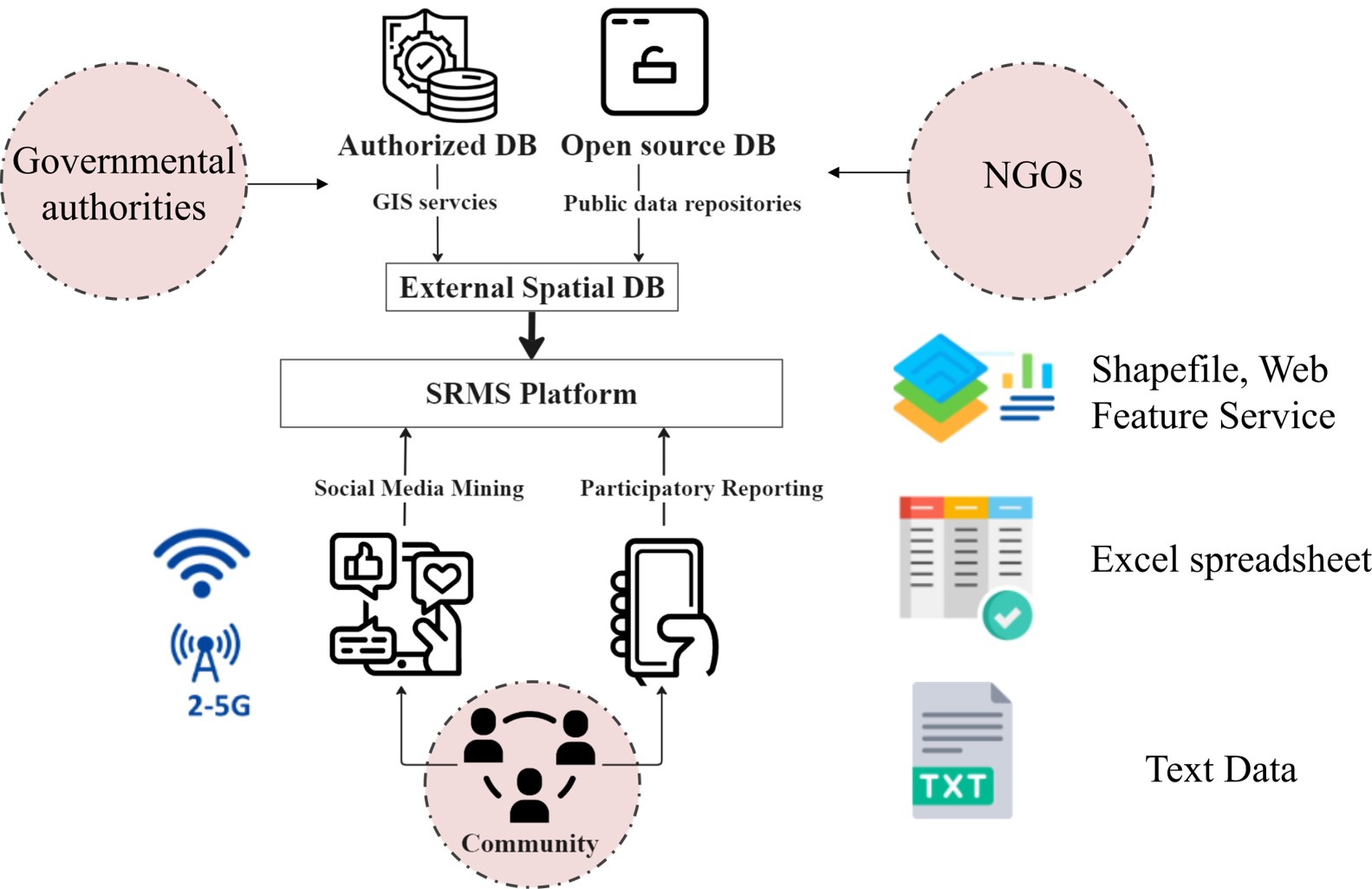 Figure 3
Figure 3
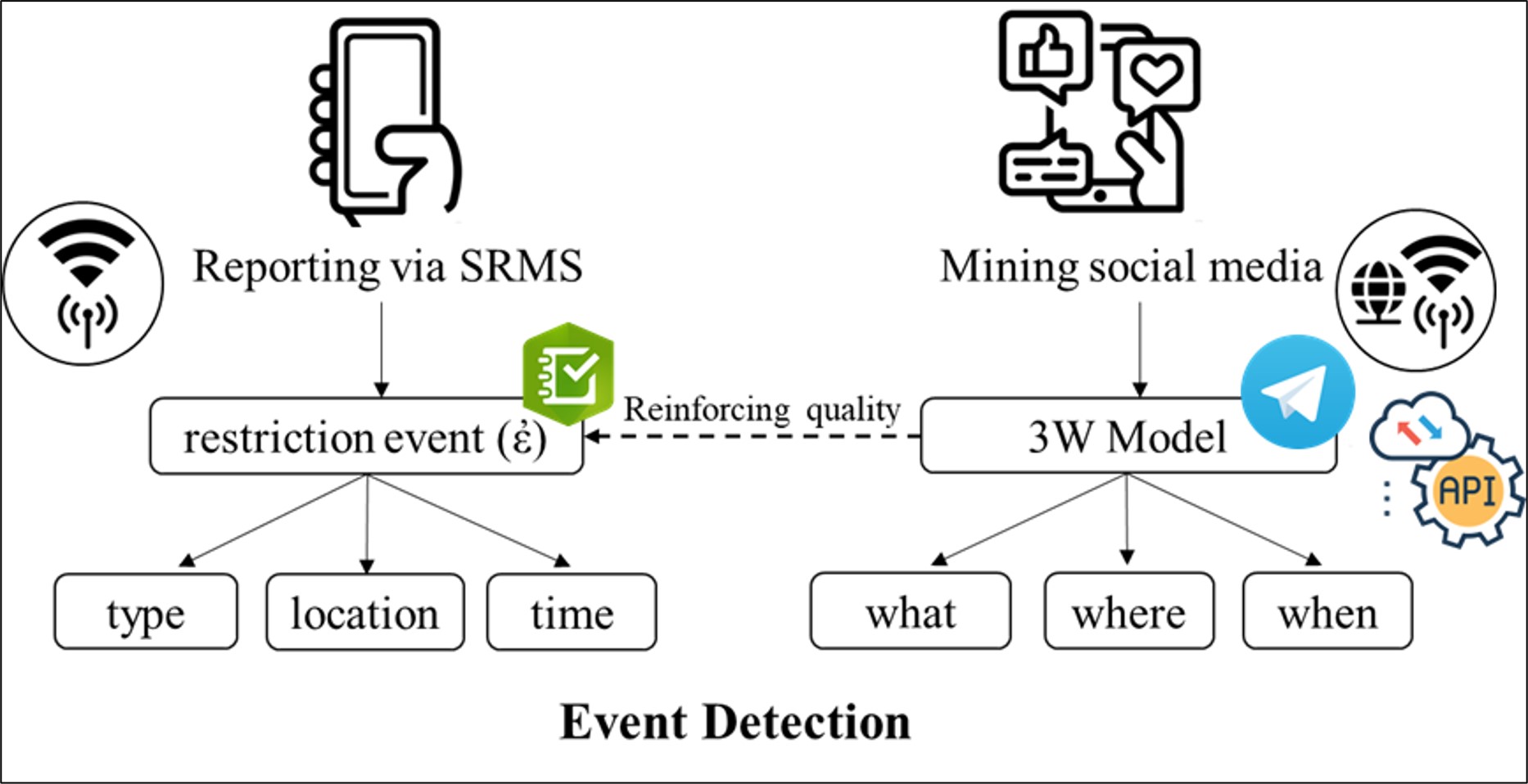 Figure 4
Figure 4
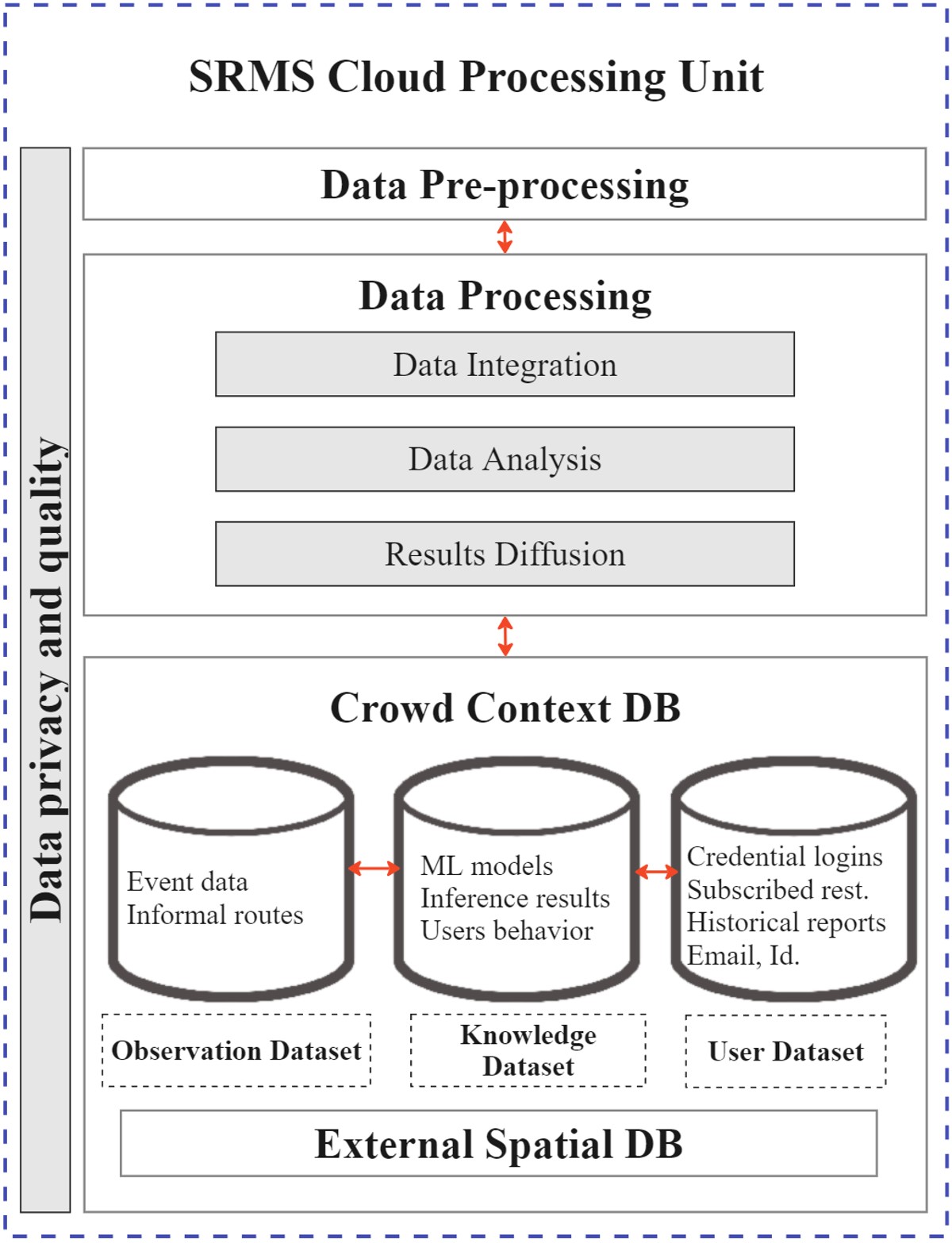 Figure 5
Figure 5
 Figure 6
Figure 6
 Figure 7
Figure 7
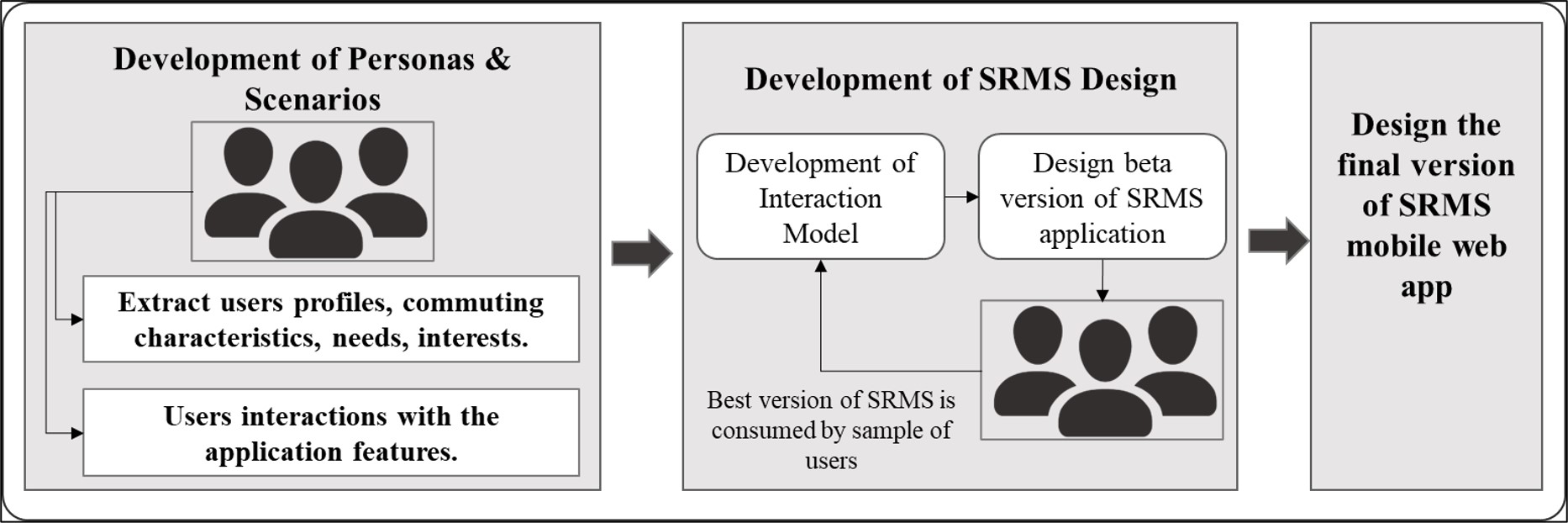 Figure 8
Figure 8
 Figure 9
Figure 9
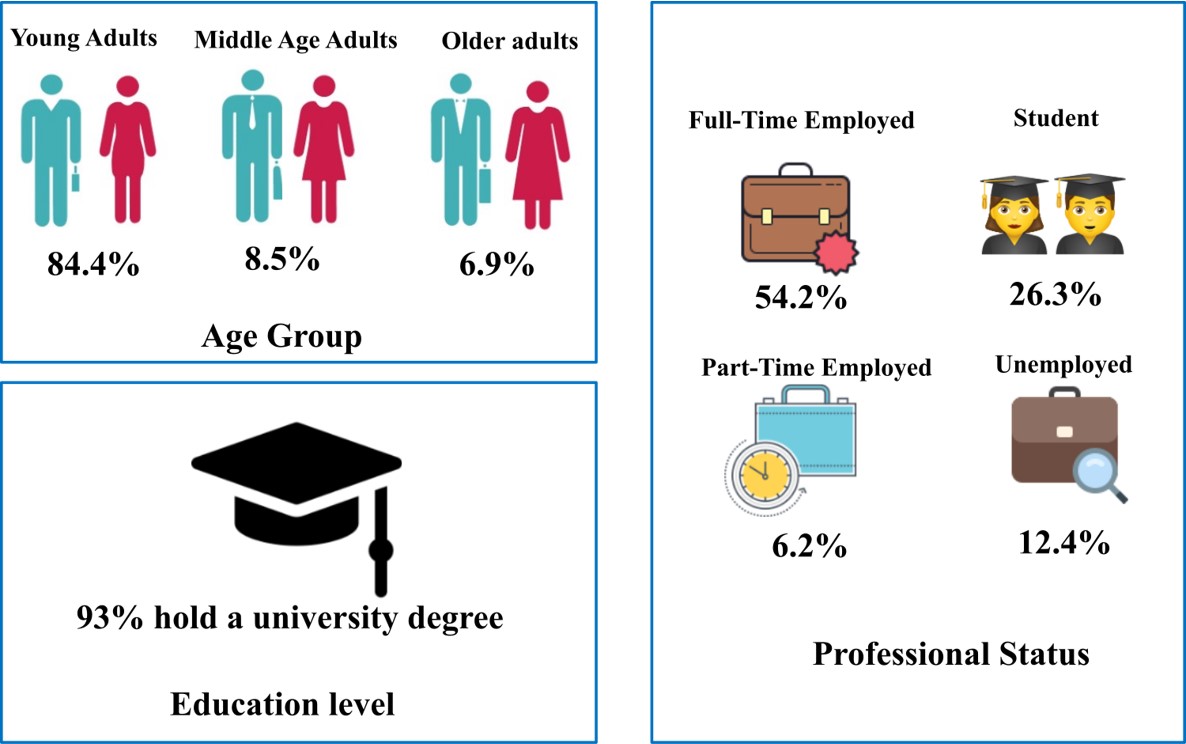 Figure 10
Figure 10
 Figure 11
Figure 11
 Figure 12
Figure 12
 Figure 13
Figure 13
 Figure 14
Figure 14
 Figure 15
Figure 15
Would you like to reuse the images? Contact the journal editorial office to obtain high-quality versions.
Keywords
Copyright © 2024
Aburas. This article is distributed under the terms of the Creative Commons Attribution License (CC BY 4.0), which permits unrestricted use and distribution provided that the original work is properly cited.
Funding
This research received no specific grant from any funding agency in the public, commercial, or not-for-profit sectors.
Cite this Article
Aburas, H. (2024). Smart and Resilient Mobility Services Platform for Managing Traffic Disruptive Events. Highlights of Sustainability, 3(2), 163–183. https://doi.org/10.54175/hsustain3020011
References
1.
Gu, S., Li, K., Feng, T., Yan, D., & Liu, Y. (2022). The prediction of potential risk path in railway traffic events. Reliability Engineering & System Safety, 222, 108409. https://doi.org/10.1016/j.ress.2022.108409
2.
Arrighi, C., Pregnolato, M., & Castelli, F. (2021). Indirect flood impacts and cascade risk across interdependent linear infrastructures. Natural Hazards and Earth System Sciences, 21(6), 1955–1969. https://doi.org/10.5194/nhess-21-1955-2021
3.
Karaer, A., Ulak, M. B., Ozguven, E. E., & Sando, T. (2020). Reducing the non-recurrent freeway congestion with detour operations: case study in Florida. Transportation Engineering, 2, 100026. https://doi.org/10.1016/j.treng.2020.100026
4.
Safitri, N. D., & Chikaraishi, M. (2022). Impact of transport network disruption on travel demand: A case study of the July 2018 heavy rain disaster in Japan. Asian Transport Studies, 8, 100057. https://doi.org/10.1016/j.eastsj.2022.100057
5.
Kurth, M., Kozlowski, W., Ganin, A., Mersky, A., Leung, B., Dykes, J., et al. (2020). Lack of resilience in transportation networks: Economic implications. Transportation Research Part D: Transport and Environment, 86, 102419. https://doi.org/10.1016/j.trd.2020.102419
6.
Yap, M., & Cats, O. (2021). Predicting disruptions and their passenger delay impacts for public transport stops. Transportation, 48(4), 1703–1731. https://doi.org/10.1007/s11116-020-10109-9
7.
Sarker, R. I., Kaplan, S., Mailer, M., & Timmermans, H. J. (2019). Applying affective event theory to explain transit users’ reactions to service disruptions. Transportation Research Part A: Policy and Practice, 130, 593–605. https://doi.org/10.1016/j.tra.2019.09.059
8.
Anuar, W. K., Lee, L. S., Pickl, S., & Seow, H. V. (2021). Vehicle routing optimisation in humanitarian operations: A survey on modelling and optimisation approaches. Applied Sciences, 11(2), 667. https://doi.org/10.3390/app11020667
9.
Lu, J., Li, B., Li, H., & Al-Barakani, A. (2021). Expansion of city scale, traffic modes, traffic congestion, and air pollution. Cities, 108, 102974. https://doi.org/10.1016/j.cities.2020.102974
10.
Song, X., Zhang, H., Akerkar, R., Huang, H., Guo, S., Zhong, L., et al. (2020). Big data and emergency management: concepts, methodologies, and applications. IEEE Transactions on Big Data, 8(2), 397–419. https://doi.org/10.1109/TBDATA.2020.2972871
11.
Rathee, M., Bačić, B., & Doborjeh, M. (2023). Automated road defect and anomaly detection for traffic safety: a systematic review. Sensors, 23(12), 5656. https://doi.org/10.3390/s23125656
12.
Lee, C., Kim, Y., Jin, S., Kim, D., Maciejewski, R., Ebert, D., et al. (2019). A visual analytics system for exploring, monitoring, and forecasting road traffic congestion. IEEE Transactions on Visualization and Computer Graphics, 26(11), 3133–3146. https://doi.org/10.1109/TVCG.2019.2922597
13.
Aljuaydi, F., Wiwatanapataphee, B., & Wu, Y. H. (2023). Multivariate machine learning-based prediction models of freeway traffic flow under non-recurrent events. Alexandria Engineering Journal, 65, 151–162. https://doi.org/10.1016/j.aej.2022.10.015
14.
Kang, Y., Cai, Z., Tan, C. W., Huang, Q., & Liu, H. (2020). Natural language processing (NLP) in management research: A literature review. Journal of Management Analytics, 7(2), 139–172. https://doi.org/10.1080/23270012.2020.1756939
15.
Essien, A., Petrounias, I., Sampaio, P., & Sampaio, S. (2021). A deep-learning model for urban traffic flow prediction with traffic events mined from twitter. World Wide Web, 24(4), 1345–1368. https://doi.org/10.1007/s11280-020-00800-3
16.
Salazar-Carrillo, J., Torres-Ruiz, M., Davis, C. A., Jr., Quintero, R., Moreno-Ibarra, M., & Guzmán, G. (2021). Traffic congestion analysis based on a web-gis and data mining of traffic events from twitter. Sensors, 21(9), 2964. https://doi.org/10.3390/s21092964
17.
Alkhabbas, F., De Sanctis, M., Bucchiarone, A., Cicchetti, A., Spalazzese, R., Davidsson, P., et al. (2022). Route: A framework for customizable smart mobility planners. In 2022 IEEE 19th International Conference on Software Architecture (ICSA) (pp. 169–179). IEEE. https://doi.org/10.1109/ICSA53651.2022.00024
18.
Lakshmi, S., Srikanth, I., & Arockiasamy, M. (2019). Identification of traffic accident hotspots using geographical information system (GIS). International Journal of Engineering and Advanced Technology, 9(2), 4429–4438. https://doi.org/10.35940/ijeat.b3848.129219
19.
Almoshaogeh, M., Abdulrehman, R., Haider, H., Alharbi, F., Jamal, A., Alarifi, S., et al. (2021). Traffic accident risk assessment framework for qassim, saudiarabia: Evaluating the impact of speed cameras. Applied Sciences, 11(15), 6682. https://doi.org/10.3390/app11156682
20.
Audu, A. A., Iyiola, O. F., Popoola, A. A., Adeleye, B. M., Medayese, S., Mosima, C., et al. (2021). The application of geographic information system as an intelligent system towards emergency responses in road traffic accident in Ibadan. Journal of Transport and Supply Chain Management, 15, 17. https://doi.org/10.4102/jtscm.v15i0.546
21.
Kong, X., Liu, X., Jedari, B., Li, M., Wan, L., & Xia, F. (2019). Mobile crowdsourcing in smart cities: Technologies, applications, and future challenges. IEEE Internet of Things Journal, 6(5), 8095–8113. https://doi.org/10.1109/JIOT.2019.2921879
22.
Ang, K. L. M., Seng, J. K. P., & Ngharamike, E. (2022). Towards crowdsourcing internet of things (crowd-iot): Architectures, security and applications. Future Internet, 14(2), 49. https://doi.org/10.3390/fi14020049
23.
Lin, H., Garg, S., Hu, J., Kaddoum, G., Peng, M., & Hossain, M. S. (2020). Blockchain and deep reinforcement learning empowered spatial crowdsourcing in software-defined internet of vehicles. IEEE Transactions on Intelligent Transportation Systems, 22(6), 3755–3764. https://doi.org/10.1109/TITS.2020.3025247
24.
Habbas, W., & Berda, Y. (2023). Colonial management as a social field: The Palestinian remaking of Israel’s system of spatial control. Current Sociology, 71(5), 848–865. https://doi.org/10.1177/00113921211024695
25.
Griffiths, M., & Repo, J. (2021). Women and checkpoints in Palestine. Security Dialogue, 52(3), 249–265. https://doi.org/10.1177/0967010620918529
26.
B’Tselem. (2023). Settler Violence in the WB. https://www.btselem.org/settler_violence_updates_list?f%5B2%5D=nf_district%3A181&f%5B3%5D=nf_type%3A173&f%5B4%5D=date%3A%28min%3A1640995200%2Cmax%3A1672444800%29&page=1 (accessed 22 January 2023).
27.
OCHA. (2020). West Bank Access Restrictions.
28.
Lam, D., & Head, P. (2012). Sustainable Urban Mobility. In O. Inderwildi & S. D. King (Eds.), Energy, Transport, & the Environment. Springer. https://doi.org/10.1007/978-1-4471-2717-8_19
29.
Calì, M., & Miaari, S. H. (2018). The labor market impact of mobility restrictions: Evidence from the West Bank. Labour Economics, 51, 136–151. https://doi.org/10.1016/j.labeco.2017.12.005
30.
Boussauw, K., & Vanin, F. (2018). Constrained sustainable urban mobility: the possible contribution of research by design in two Palestinian cities. Urban Design International, 23, 182–199. https://doi.org/10.1057/s41289-018-0059-y
31.
Braverman, I. (2011). Civilized borders: A study of Israel's new crossing administration. Antipode, 43(2), 264–295. https://doi.org/10.1111/j.1467-8330.2010.00773.x
32.
Rijke, A., & Minca, C. (2019). Inside Checkpoint 300: Checkpoint regimes as spatial political technologies in the Occupied Palestinian Territories. Antipode, 51(3), 968–988. https://doi.org/10.1111/anti.12526
33.
Amira, S. (2021). The slow violence of Israeli settler-colonialism and the political ecology of ethnic cleansing in the West Bank. Settler Colonial Studies, 11(4), 512–532. https://doi.org/10.1080/2201473X.2021.2007747
34.
Aburas, H., & Shahrour, I. (2021). Impact of the Mobility Restrictions in the Palestinian Territory on the Population and the Environment. Sustainability, 13(23), 13457. https://doi.org/10.3390/su132313457
35.
Shahrour, I., & Xie, X. (2021). Role of Internet of Things (IoT) and crowdsourcing in smart city projects. Smart Cities, 4(4), 1276–1292. https://doi.org/10.3390/smartcities4040068
36.
Haque, A. B., Bhushan, B., & Dhiman, G. (2022). Conceptualizing smart city applications: Requirements, architecture, security issues, and emerging trends. Expert Systems, 39(5), e12753. https://doi.org/10.1111/exsy.12753
37.
Al-Sahili, K., & Dwaikat, M. (2019). Modeling geometric design consistency and road safety for two-lane rural highways in the west bank, Palestine. Arabian Journal for Science and Engineering, 44, 4895–4909. https://doi.org/10.1007/s13369-018-3610-7
38.
Huang, X., Wang, X., Pei, J., Xu, M., Huang, X., & Luo, Y. (2018). Risk assessment of the areas along the highway due to hazardous material transportation accidents. Natural Hazards, 93, 1181–1202. https://doi.org/10.1007/s11069-018-3346-4
39.
Liu, B., Siu, Y. L., & Mitchell, G. (2016). Hazard interaction analysis for multi-hazard risk assessment: a systematic classification based on hazard-forming environment. Natural Hazards and Earth System Sciences, 16(2), 629–642. https://doi.org/10.5194/nhess-16-629-2016
40.
Bishara, A. (2015). Driving while Palestinian in Israel and the West Bank: The politics of disorientation and the routes of a subaltern knowledge. American Ethnologist, 42(1), 33–54. https://doi.org/10.1111/amet.12114
41.
Lwanga-Ntale, C., & Owino, B. O. (2020). Understanding vulnerability and resilience in Somalia. Jàmbá: Journal of Disaster Risk Studies, 12(1). https://doi.org/10.4102/JAMBA.V12I1.856
42.
Sajjad, M. (2021). Disaster resilience in Pakistan: A comprehensive multi-dimensional spatial profiling. Applied Geography, 126, 102367. https://doi.org/10.1016/j.apgeog.2020.102367
43.
Sohouenou, P. Y., Neves, L. A., Christodoulou, A., Christidis, P., & Presti, D. L. (2021). Using a hazard-independent approach to understand road-network robustness to multiple disruption scenarios. Transportation Research Part D: Transport and Environment, 93, 102672. https://doi.org/10.1016/j.trd.2020.102672
44.
Leobons, C. M., Campos, V. B. G., & de Mello Bandeira, R. A. (2019). Assessing urban transportation systems resilience: a proposal of indicators. Transportation Research Procedia, 37, 322–329. https://doi.org/10.1016/j.trpro.2018.12.199
45.
Samper, J. (2012). Urban resilience in situations of chronic violence case study of Medellin, Colombia. Massachusetts Institute of Technology MIT, 1–34.
46.
Dunckel Graglia, A. (2016). Finding mobility: women negotiating fear and violence in Mexico City’s public transit system. Gender, Place & Culture, 23(5), 624–640. https://doi.org/10.1080/0966369X.2015.1034240
47.
Jayasena, N. S., Mallawaarachchi, H., & Waidyasekara, K. G. A. S. (2019). Stakeholder analysis for smart city development project: An extensive literature review. In MATEC web of conferences (Vol. 266, p. 06012). EDP Sciences.
48.
Lindenau, M., & Böhler-Baedeker, S. (2014). Citizen and stakeholder involvement: a precondition for sustainable urban mobility. Transportation Research Procedia, 4, 347–360. https://doi.org/10.1016/j.trpro.2014.11.026
49.
Phuttharak, J., & Loke, S. W. (2018). A review of mobile crowdsourcing architectures and challenges: Toward crowd-empowered internet-of-things. IEEE Access, 7, 304–324. https://doi.org/10.1109/ACCESS.2018.2885353
50.
Esri. (2023). Shapefile. https://doc.arcgis.com/en/arcgis-online/reference/shapefiles.htm (accessed 7 April 2023).
51.
Jay, B., Alberta, S., & Royal, M. (2019). The tools of citizen science: An evaluation of map-based crowdsourcing platforms Chickadee Technology. Spatial Knowledge and Information Canada, 7(4).
52.
Khaund, T., Hussain, M. N., Shaik, M., & Agarwal, N. (2020). Telegram: Data collection, opportunities and challenges. In Annual International Conference on Information Management and Big Data (pp. 513–526). Springer, Cham.
53.
Anand, A., Patel, R., & Rajeswari, D. (2022). A Comprehensive Synchronization by Deriving Fluent Pipeline and Web Scraping through Social Media for Emergency Services. In 2022 International conference on advances in computing, communication and applied informatics (ACCAI) (pp. 1–8). IEEE. https://doi.org/10.1109/ACCAI53970.2022.9752629
54.
Dongo, I., Cadinale, Y., Aguilera, A., Martínez, F., Quintero, Y., & Barrios, S. (2020). Web scraping versus twitter API: a comparison for a credibility analysis. In Proceedings of the 22nd International conference on information integration and web-based applications & services (pp. 263–273). Association for Computing Machinery. https://doi.org/10.1145/3428757.3429104
55.
Wang, R. Q., Mao, H., Wang, Y., Rae, C., & Shaw, W. (2018). Hyper-resolution monitoring of urban flooding with social media and crowdsourcing data. Computers & Geosciences, 111, 139–147. https://doi.org/10.1016/j.cageo.2017.11.008
56.
Esri. (2023). Why Use Cloud Infrastructure for ArcGIS? https://www.esri.com/news/arcnews/summer11articles/why-use-cloud-infrastructure-for-arcgis.html (accessed 20 March 2023).
57.
Esri. (2023). ArcGIS Trust Center. https://trust.arcgis.com/en/security/cloud-options.htm (accessed 15 March 2023).
58.
Corral-Plaza, D., Medina-Bulo, I., Ortiz, G., & Boubeta-Puig, J. (2020). A stream processing architecture for heterogeneous data sources in the Internet of Things. Computer Standards & Interfaces, 70, 103426. https://doi.org/10.1016/j.csi.2020.103426
59.
Zou, L., Lam, N. S., Cai, H., & Qiang, Y. (2018). Mining Twitter data for improved understanding of disaster resilience. Annals of the American Association of Geographers, 108(5), 1422–1441. https://doi.org/10.1080/24694452.2017.1421897
60.
Elhenawy, M., Chen, H., & Rakha, H. (2014). Random forest travel time prediction algorithm using spatiotemporal speed measurements. In Proceedings of the 21st World Congress on Intelligent Transport Systems and ITS America Annual Meeting 2014 (pp. 2000–2215). ITS America.
61.
Zhao, Y., Gong, X., & Chen, X. (2020). Privacy-preserving incentive mechanisms for truthful data quality in data crowdsourcing. IEEE Transactions on Mobile Computing, 21(7), 2518–2532. https://doi.org/10.1109/TMC.2020.3040138
62.
Tong, Y., Zhou, Z., Zeng, Y., Chen, L., & Shahabi, C. (2020). Spatial crowdsourcing: a survey. The VLDB Journal, 29, 217–250. https://doi.org/10.1007/s00778-019-00568-7
63.
Tandel, S., & Jamadar, A. (2018). Impact of progressive web apps on web app development. International Journal of Innovative Research in Science, Engineering and Technology, 7(9), 9439–9444.
64.
Shah, K., Sinha, H., & Mishra, P. (2019). Analysis of cross-platform mobile app development tools. In 2019 IEEE 5th International Conference for Convergence in Technology (I2CT) (pp. 1–7). IEEE. https://doi.org/10.1109/I2CT45611.2019.9033872
65.
Rochim, R. V., Rahmatulloh, A., El-Akbar, R. R., & Rizal, R. (2023). Performance Comparison of Response Time Native, Mobile and Progressive Web Application Technology. Innovation in Research of Informatics (INNOVATICS), 5(1), 36–43. https://doi.org/10.37058/innovatics.v5i1.7045
66.
Jobe, W. (2013). Native Apps vs. Mobile Web Apps. International Journal of Interactive Mobile Technologies, 7(4), 27–32. https://doi.org/10.3991/ijim.v7i4.3226
67.
Musolino, G., Rindone, C., & Vitetta, A. (2022). Models for supporting mobility as a service (MaaS) design. Smart Cities, 5(1), 206–222. https://doi.org/10.3390/smartcities5010013
68.
Rahmanian, B., & Davis, J. G. (2014). User interface design for crowdsourcing systems. In Proceedings of the 2014 International Working Conference on Advanced Visual Interfaces (pp. 405–408). Association for Computing Machinery. https://doi.org/10.1145/2598153.2602248
69.
Blackett, C. (2021). Human-centered design in an automated world. In D. Russo, T. Ahram, W. Karwowski, G. Di Bucchianico, & R. Taiar (Eds.), Intelligent Human Systems Integration 2021: Proceedings of the 4th International Conference on Intelligent Human Systems Integration (IHSI 2021) (pp. 17–23). https://doi.org/10.1007/978-3-030-68017-6_3
70.
Vallet, F., Puchinger, J., Millonig, A., Lamé, G., & Nicolaï, I. (2020). Tangible futures: Combining scenario thinking and personas-A pilot study on urban mobility. Futures, 117, 102513. https://doi.org/10.1016/j.futures.2020.102513
71.
Bano, M., & Zowghi, D. (2015). A systematic review on the relationship between user involvement and system success. Information and Software Technology, 58, 148–169. https://doi.org/10.1016/j.infsof.2014.06.011
72.
Lopes, A., Valentim, N., Moraes, B., Zilse, R., & Conte, T. (2018). Applying user-centered techniques to analyze and design a mobile application. Journal of Software Engineering Research and Development, 6, 1–23. https://doi.org/10.1186/s40411-018-0049-1
73.
Cooper, A. (1999). The Inmates Are Running the Asylum. In U. Arend, E. Eberleh, & K. Pitschke (Eds.), Software-Ergonomie ’99: Design von Informationswelten. Springer-Verlag.
74.
Carroll, J. M., & Rosson, M. B. (1992). Getting around the task-artifact cycle: How to make claims and design by scenario. ACM Transactions on Information Systems (TOIS), 10(2), 181–212. https://doi.org/10.1145/146802.146834
75.
Sim, W. W., & Brouse, P. (2015). Developing ontologies and persona to support and enhance requirements engineering activities–a case study. Procedia Computer Science, 44, 275–284.
76.
Fernandes, U. D. S., Prates, R. O., Chagas, B. A., & Barbosa, G. A. (2021). Analyzing MoLIC's Applicability to Model the interaction of Conversational Agents: A case study on ANA Chatbot. In Proceedings of the XX Brazilian Symposium on Human Factors in Computing Systems (pp. 1–7). Association for Computing Machinery.
77.
Barbosa, S. D. J., & de Paula, M. G. (2003). Designing and Evaluating Interaction as Conversation: A Modeling Language Based on Semiotic Engineering. In J. A. Jorge, N. Jardim Nunes, & J. Falcão e Cunha (Eds.), DSV-IS 2003: Interactive Systems. Design, Specification, and Verification (pp. 16–33). Springer. https://doi.org/10.1007/978-3-540-39929-2_2
78.
Lopes, A., dos Santos Marques, A. B., Barbosa, S. D., & Conte, T. (2015). MoLVERIC: An Inspection Technique for MoLIC Diagrams. In SEKE (pp. 13–17). https://doi.org/10.18293/SEKE2015-069
79.
PCBS. (2019). Household Survey on Information and Communications Technology–2019. https://www.pcbs.gov.ps/PCBS-Metadata-en-v5.2/index.php/catalog/489 (accessed 23 April 2021).
80.
Braun, V., Clarke, V., Boulton, E., Davey, L., & McEvoy, C. (2021). The online survey as a qualitative research tool. International Journal of Social Research Methodology, 24(6), 641–654. https://doi.org/10.1080/13645579.2020.1805550
81.
PCBS. (2022). العاملون حسب المحافظة في مكان العمل 2022 (in Arabic).
82.
Esri. (2023). ArcGIS Experience Builder. https://www.esri.com/en-us/arcgis/products/arcgis-experience-builder/overview (accessed 22 February 2023).
83.
Geomolg. (2020). Geomolg. https://geomolg.ps/L5/index.html?viewer=A3.V1 (accessed 20 March 2020).
Metrics
Loading...
Journal Menu
Journal Contact
Highlights of Sustainability
Editorial Office
Highlights of Science
Avenida Madrid, 189-195, 3-3
08014 Barcelona, Spain
08014 Barcelona, Spain
Cathy Wang
Managing Editor